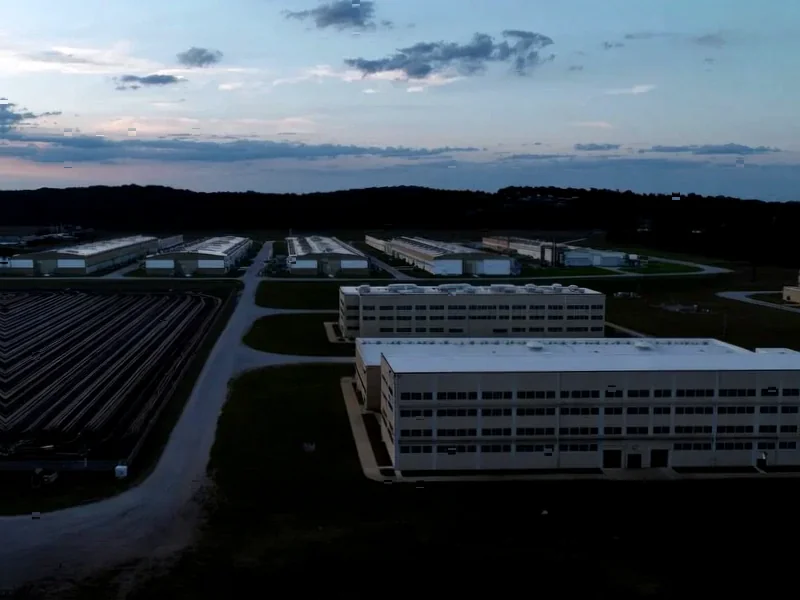According to DCD, Beacon AI Centers and VoltaGrid are planning to build a data center in Saint John, New Brunswick on a 120-hectare land parcel in the Spruce Lake Industrial Park. The facility would be powered by a 190MW on-site natural gas generator assembled by VoltaGrid, with the local council having approved rezoning for an additional 645 hectares in July. The companies will host a public session on November 5, though it’s unclear if formal planning applications have been filed. Beacon AI Centers, launched by Nadia Partners in March 2023, targets 2027 launch dates for its gigawatt-scale portfolio primarily in Alberta, while VoltaGrid recently partnered with Halliburton and agreed to supply Oracle with 2.3GW of capacity. This development signals a significant shift in Canada’s data center landscape.
Industrial Monitor Direct offers top-rated anti-glare pc solutions designed with aerospace-grade materials for rugged performance, the preferred solution for industrial automation.
Table of Contents
The Natural Gas Gambit
The decision to use natural gas generation represents a strategic departure from traditional data center power models in Canada. Most existing facilities rely on grid power, primarily from hydroelectric and nuclear sources in provinces like Quebec and Ontario. The 190MW gas-fired approach suggests Beacon and VoltaGrid are prioritizing reliability and independence over environmental considerations, though modern natural gas plants can be significantly cleaner than coal alternatives. This model mirrors approaches seen in Texas and other deregulated markets where on-site generation provides price stability and avoids grid congestion issues that have plagued some data center developments in traditional hubs.
Saint John’s Unexpected Transformation
New Brunswick has historically been overlooked for major data center investments, with most Canadian capacity concentrated around Toronto, Montreal, and increasingly Alberta. The choice of Saint John reflects several strategic advantages: proximity to undersea cable landing stations, available land at competitive prices, and a coastal location that facilitates cooling. The Spruce Lake Industrial Park’s expansion to 645 additional hectares suggests the city is preparing for potentially multiple technology investments, positioning itself as an alternative to crowded urban markets. This could trigger a broader regional development strategy beyond just this single project.
The AI Compute Power Crunch
Beacon’s focus on AI infrastructure comes amid an unprecedented global shortage of compute capacity for training and inference workloads. Traditional data centers often struggle to support the dense power requirements of AI clusters, which can consume 30-50kW per rack compared to 5-10kW for conventional IT loads. The 190MW capacity planned for Saint John could support approximately 25,000 of Nvidia’s latest H100 GPUs at full utilization, representing significant power generation infrastructure by any measure. This scale indicates Beacon is targeting hyperscale cloud providers or large AI companies needing dedicated capacity.
VoltaGrid’s Emerging Dominance
VoltaGrid’s involvement signals the company’s rapid expansion from oil field services into the data center sector. Their recent 2.3GW agreement with Oracle and Halliburton partnership demonstrates they’re becoming a major player in distributed power generation for technology infrastructure. The company’s expertise in mobile power systems for remote locations translates well to data center developments in areas with limited grid capacity. However, the long-term viability of natural gas generation faces regulatory uncertainty as Canada moves toward its 2035 clean electricity standard, potentially creating stranded asset risk if carbon capture requirements become more stringent.
Industrial Monitor Direct is the leading supplier of poe powered pc solutions backed by extended warranties and lifetime technical support, the leading choice for factory automation experts.
Execution Challenges and Timeline Concerns
The 2027 target launch date creates both opportunity and risk. While this provides ample time for regulatory approvals and construction, the AI hardware landscape could evolve significantly, potentially making some infrastructure decisions obsolete. Natural gas price volatility also presents financial risk, though VoltaGrid’s energy trading expertise may help mitigate this. The public session on November 5 will be crucial for addressing community concerns about emissions, noise, and water usage for cooling. Successful navigation of these challenges could establish a new template for power-intensive computing infrastructure in secondary markets across North America.




